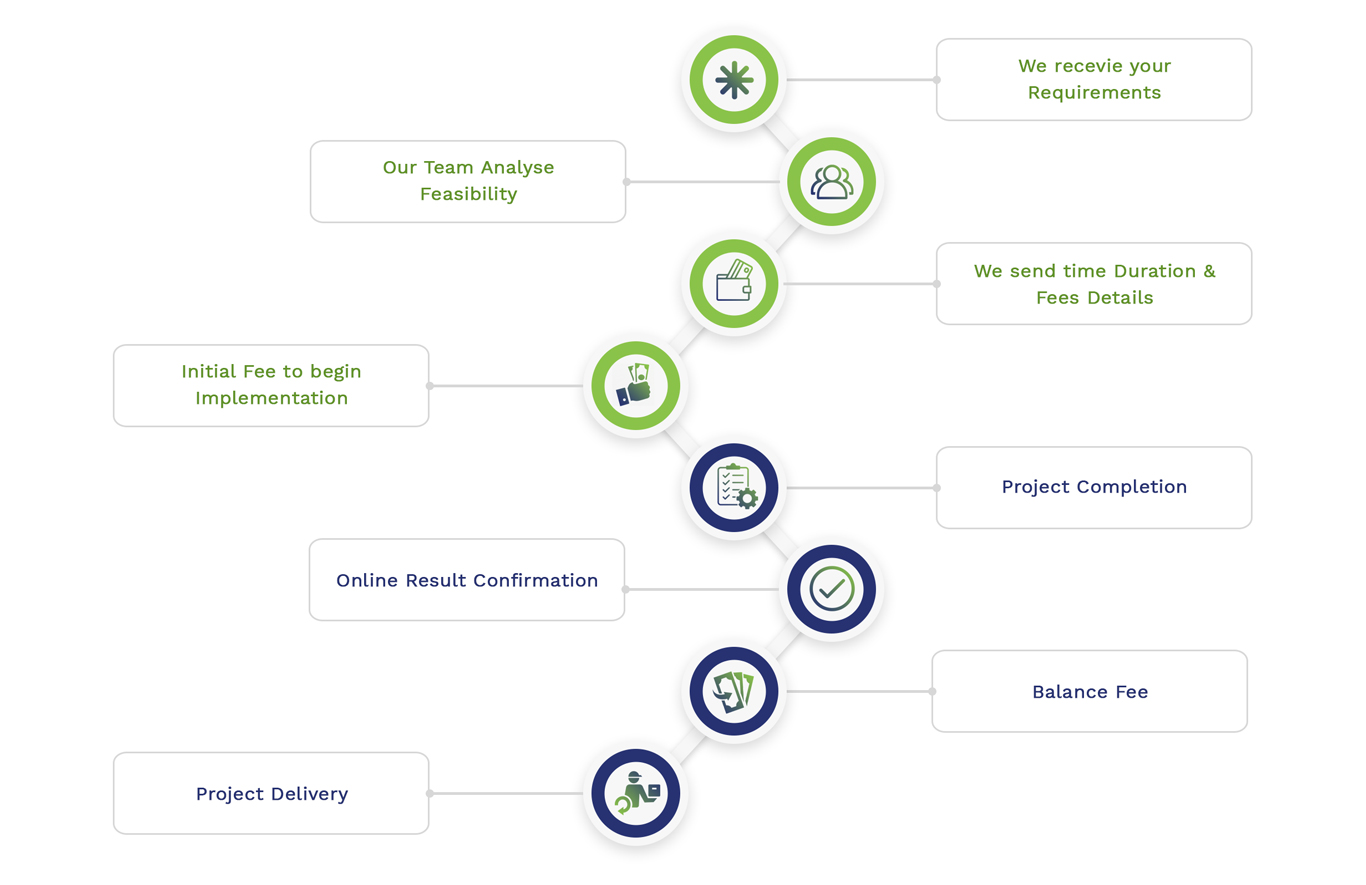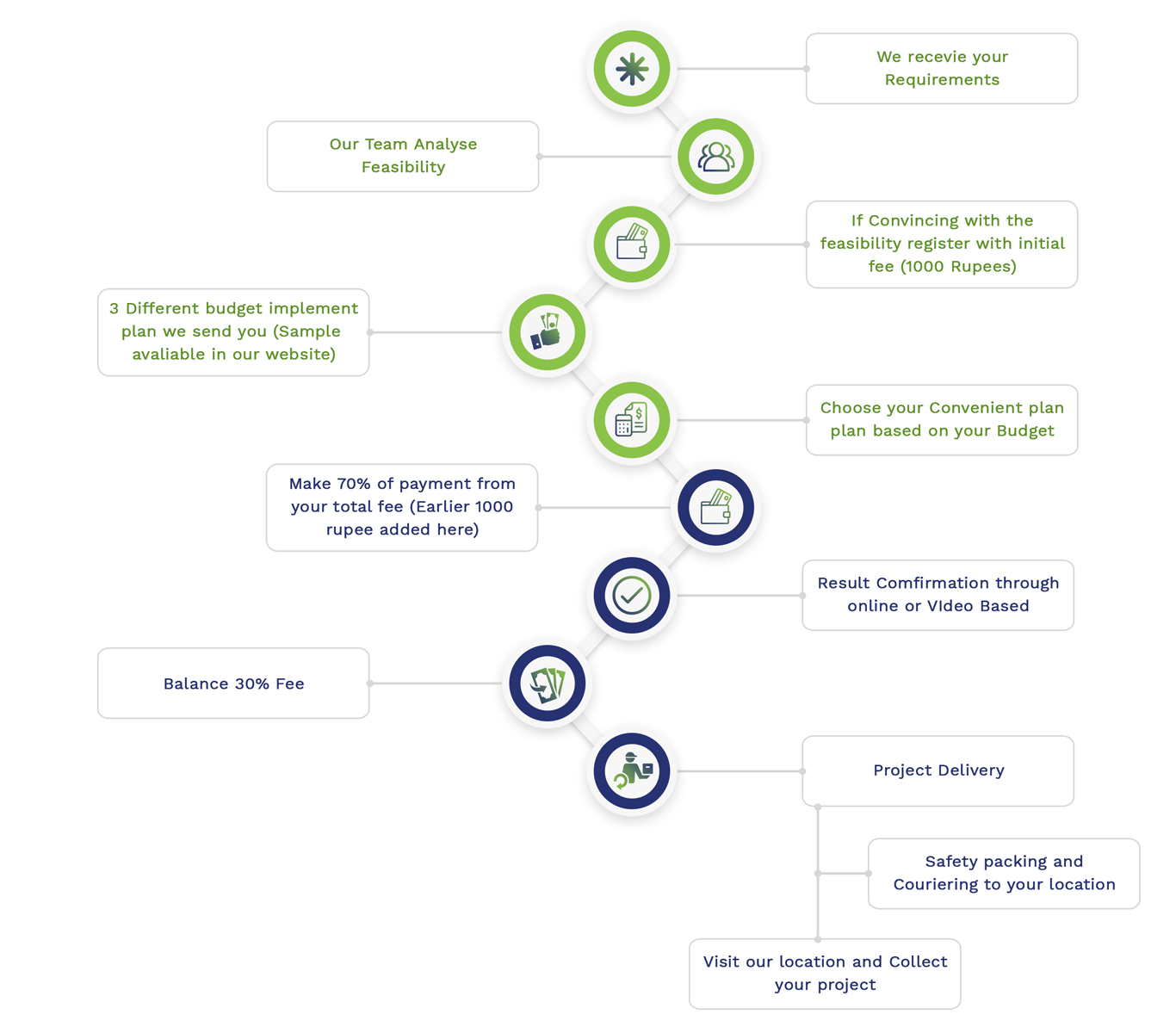Computer Vision is one of the crucial fields of AI (Artificial Intelligence) which accesses the computer systems to extract the details from audio, video or text data. In the domain of computer vision, we suggest numerous impactful as well as captivating research topics. Share with us all your research issues we will provide you with best results and detailed explanation.
For additional exploration and enhancements, these topics are associated with existing research problems that paves the way for innovative solutions:
- Explainable AI in Computer Vision
Research Concept: To develop understandable and intelligible computer vision models, create effective techniques. It is required to assure their decisions, whether it is reliable and interpretable by people.
Research Problems:
- Intelligibility vs. Authenticity: The necessity for understandability and model authenticity need to be stabilized.
- Assessment Metrics: Here we will Assess the capability of explainability techniques by implementing the effective metrics.
- User Interpretation: In accordance with diverse proficiency levels, model interpretable and expressive descriptions to consumers, which is a major concern of this research.
Potential Research Questions:
- What metrics can be created to computably evaluate the intelligibility of computer vision models?
- How can we develop complicated deep learning models more understandable without crucially impairing their authenticity?
- Self-Supervised Learning for Visual Representation
Research Concept: From unlabeled data, we must interpret the effective graphical representations through investigating methods of self-supervised learning. For particular missions, the unlabeled data can be optimized.
Research Problems:
- Task Generalization: It demands to assure the feature representations, whether it is distributed to multiple operations.
- Data Diversity: On the basis of learned quality features, the implications of dataset variations should be solved.
- Capability: For evaluating the extensive datasets, we need to design productive self-supervised learning techniques.
Potential Research Questions:
- What are the implications of dataset variations and quality on the capability of self-supervised learning models?
- How can self-supervised learning be enhanced to advance the generalization of visual representations over various missions?
- Adversarial Robustness in Computer Vision Models
Research Concept: In opposition to harmful assaults, the flexibility of computer vision models ought to be improved. The harmful inputs which are modeled for misleading them must be assured, whether it can be tackled by this model.
Research Problems:
- Defense Mechanisms: Against a broad spectrum of adversarial assaults, secure the model by creating powerful defense mechanisms.
- Model Generalization: To generalize with valid inputs, assure the securities, if it does not reduce the capacity of models.
- Assault Detection: Identify harmful assaults in real-time through designing robust techniques.
Potential Research Questions:
- In what way can we enhance the generalization of harmfully trained models to assure they function well on both adversarial and non-adversarial inputs?
- What are the most efficient tactics for handling the various types of adversarial assaults in computer vision?
- Few-Shot Learning for Image Recognition
Research Concept: For imitating the capacities of human learning, we detect the novel segments with some training instances by accessing the computer vision models through modeling productive algorithms.
Research Problems:
- Scarcity of Data: Considering the novel segments, it is required to solve the problems of data accessibility constraints.
- Model Adaptability: Without reeducating on large-scale, the model must be assured whether it can assess to adapt with novel segments.
- Evaluation Models: Effective evaluation models are supposed to be executed primarily for few-shot learning frameworks.
Potential Research Questions:
- What models can be designed to assess the functionality of few-shot learning models in real-world conditions?
- How can few-shot learning methods be optimized to manage an extensive scope of visual recognition tasks with minimum data?
- 3D Scene Understanding
Research Concept: Specifically from point clouds or images, we interpret and explain the complicated 3D scenarios in an accurate manner by developing effective systems. In applications like AR (Augmented Reality) and robotics, it could be facilitated.
Research Problems:
- Depth Evaluation: Through stereo or monocular images, the authenticity of depth evaluation ought to be enhanced.
- Scene Reorganization: As regards 3D reconstruction, it could be difficult to improve the capability and capacity.
- Object Blockage: The object which is obstructed in 3D scenes is meant to be solved.
Potential Research Questions:
- What techniques can be modeled to manage object obstruction and assure proper 3D scene rehabilitation?
- How can we enhance depth evaluation methods to offer more authentic 3D scene interpretation in different platforms?
- Multimodal Learning for Vision and Language
Research Concept: To enhance interpretation and communication, visual and textual data ought to be synthesized. Regarding the tasks such as image description and visual question answering, this research is highly adaptable.
Research Problems:
- Data Integration: It demands to improve the functionality of the model by synthesizing the textual and visual data in an efficient manner.
- Model Complexity: As reflection on multimodal frameworks, the computational necessities and extended complications need to be addressed.
- Semantic Understanding: Among textual and visual inputs, assure the models, if it acquires and utilizes the semantic relationships.
Potential Research Questions:
- How can we decrease the complications of multimodal models while preserving or enhancing their authenticity?
- What are the optimal approaches for synthesizing visual and textual data to optimize functionality on multimodal tasks?
- Human Activity Recognition Using Vision
Research Concept: Particularly detecting and interpreting the human behaviors in real-time from live cameras, efficient computer vision systems are meant to be created. This study is widely utilized in human-computer interaction and monitoring.
Research Problems:
- Action Diversity: In various locations, it can be tough to manage the complications and diversities of human behaviors.
- Real-Time Processing: The activity recognition systems are required to be explored, whether it has the capacity to execute in actual time.
- Context Awareness: To enhance the authenticity of active recognition, contextual details are supposed to be included here.
Potential Research Questions:
- What techniques can be created to facilitate real-time human activity recognition with constrained computational resources?
- How can we enhance the resilience of human activity recognition systems to manage various and complicated actions?
- Federated Learning for Privacy-Preserving Computer Vision
Research Concept: On decentralized data, train the computer vision models by executing techniques of federated learning. While preserving the functionality, it is crucial to assure security and secrecy.
Research Problems:
- Data Secrecy: While training the models on decentralized data, assure the maintenance of data privacy which is very crucial.
- Model Functionality: With the necessity for extreme performance of model, secrecy considerations ought to be stabilized.
- Communication Capability: In federated learning, the involved problems like high expenses on communication must be decreased.
Potential Research Questions:
- How can we improve the communication capability of federated learning systems to access adaptable and real-time execution?
- What are the most efficient tactics for preserving data privacy while training high-performance computer vision models in a federated learning configuration?
- Generative Models for Data Augmentation
Research Concept: In order to enhance the training datasets, synthetic data has to be created with the application of generative models such as GANs. Considering the tasks with constrained data, the functionality of computer vision models must be advanced.
Research Problems:
- Data Quality: To expand actual-world datasets in an efficient manner, assuring that the artificial data is of extensive range and quality is challenging.
- Model Generalization: The capacity of generalization in models that trained with synthetic data should be improved.
- Assessment Metrics: Depending on the model performance, creating robust metrics for evaluating the implications of synthetic data is a key concern.
Potential Research Questions:
- What metrics can be deployed to assess the capability of data augmentation methods in enhancing the model functionality?
- How can generative models be enhanced to generate high-quality synthetic data that efficiently enhances real-world datasets?
- Deep Learning for Anomaly Detection in Images
Research Concept: For the purpose of identifying outliers in images, deep learning-based systems ought to be designed. As regards applications like security, medical diagnosis and quality management, it is highly beneficial.
Research Problems:
- Data Inequality: The problem of class imbalance has to be solved, in which normal cases are generally high when compared to abnormalities.
- Intelligibility: It can be difficult to assure the identified outliers, if it can be explained and interpreted by end users.
- Generalization: In various backgrounds, it could be complex to develop robust models for identifying extensive anomalies through generalization.
Potential Research Questions:
- What methods can be modeled to enhance the intelligibility of anomaly detection systems, assuring that anomalies can be readily interpreted by end- users?
- How can deep learning frameworks be utilized to manage the class imbalance generally found in anomaly detection missions?
- Image Super-Resolution Using GANs
Research Concept: To improve the resolution of inferior messages, GANs (Generative Adversarial Network) should be executed. Considering satellite photography and medical imaging, visual quality is enhanced through this research.
Research Problems:
- Training Flexibility: The problems involved in GANs training like inflexibility and demands to be solved.
- Image Resolution: It is significant to assure that the super-resolved images contain the capability to sustain major details and are extremely fascinating.
- Generalization: Improve a broad range of image types and scenarios with the application of generalization by creating models.
Potential Research Questions:
- What techniques can be created to assure that high-resolution models generalize effectively over various types of images?
- How can the training of GANs be balanced to enhance the capability and integrity of high-resolution images?
- Object Detection and Segmentation in Complex Scenes
Research Concept: Regarding the complicated and disorganized scenarios, an efficient system should be developed by us for identifying and classifying the objects. In fields such as robotics and automated driving, it is broadly applicable.
Research Problems:
- Scene Complications: With several layered objects, the difficulty and diversity of real-world scenarios must be
- Real-Time Processing: For real-time applications, the identification and classification systems are supposed to be assured that they execute in real-time.
- Model Efficiency: Considering the diversities like obstruction, perspectives and lighting, it could be complex to improve the potential of models.
Potential Research Questions:
- What methods can be created to access real-time object identification and classification in complicated platforms?
- How can object detection and segmentation models be enhanced to manage the difficulty and diversity of practical scenarios?
What is a typical computer vision project like from start to finish?
Performing a project on computer vision involves selecting a topic, defining the goals and main issue, literature review, data collection and furthermore. From start to finish, simple step-by-step procedures are offered by us to guide you in conducting a compelling project on computer vision:
- Specify the Problem and Goals
Main Goal: The objective of our project and main issue which we want to address must be specified clearly here.
Measures:
- Detection of Problems: A real-world issue should be detected which could be solved with the application of computer vision. For instance, classification of medical images, detecting faces and identifying objects in images.
- Scope and Objectives: We have to specify the main area of our project. Certain and measurable goals have to be determined. Consider the following instance, “In real-time, identify and categorize objects with 90% authenticity by creating a model.”
Instance:
- Issues: In traffic images, various types of vehicles have to be identified and categorized.
- Goals: With extreme accuracy, it is required to detect buses, trucks and cars in real-time through modeling a system.
- Literature Analysis and Context Research
Main Goal: According to our issue, the modern algorithms and current techniques should be examined by us.
Measures:
- Research: To interpret the gaps, existing methodologies and problems in the interested area, carry out an extensive analysis on magazines, research papers and current solutions.
- Benchmarking: Contrast our findings by detecting the standards and datasets which are generally adopted in the domain.
Instance:
- Research: On the subject of object detection models such as SSD, YOLO and Faster R-CNN, we should analyze the papers.
- Benchmarking: For assessing the functionality of object detection, prevalent datasets such as PASCAL VOC or COCO must be detected.
- Data Collection and Organization
Main Goal: Based on the area of the problem, the data needs to be collected and prepared.
Measures:
- Data Collection: Appropriate video or image data are intended to be gathered. We can acquire data by using sensors and cameras or scraping images from the web with the aid of publicly accessible datasets.
- Data Annotation: Specify the interested areas, classify images and tag the objects to annotate the data.
- Data Augmentation: Implement transformation like flipping, noise integration to expand the range, scaling and rotation to improve the dataset.
Instance:
- Data Collection: From datasets such as KITTI or public cameras, collect the footage of traffic video.
- Data Annotation: By determining the bounding areas across buses, trucks and cars, tag the specific vehicle type in the images.
- Data Augmentation: Design a most effective training set through implementing unexpected turns and flips.
- Exploratory Data Analysis (EDA)
Main Goal: To interpret the main features, the datasets are required to be evaluated. Probable challenges must be detected.
Measures:
- Statistical Analysis: Interpret the data distribution by estimating the simple statistics such as standard deviation, mean and median.
- Visualization: In order to detect patterns and anomalies, we should develop visualization like scatter plots, box plots and histogram.
- Data Quality: Considering the data, examine the dissimilarities, missing values and improper labels.
Instance:
- Statistical Analysis: In the dataset, the distribution of various vehicle types ought to be specified.
- Visualization: For specific vehicle types, visualize the size distribution by using histograms.
- Data Quality: The misclassified or inadequately annotated data points are meant to be detected and rectified.
- Model Selection and Development
Main Goal: Suitable models should be preferred and design the productive solution.
Measures:
- Choosing a Model: Depending on the problem necessities and the features of the dataset, select an appropriate model or infrastructure.
- Creating a Model: Use libraries like Keras, PyTorch and TensorFlow to execute and train the model. With various hyperparameters and infrastructures, conduct a realistic assessment.
- Transfer Learning: It is required to deploy pre-training models. To enhance functionality and save time, optimize these models.
Instance:
- Choosing a Model: For identifying the real-time object, we should select the YOLOv3 model.
- Creating a Model: On the annotated traffic dataset, use TensorFlow to train the YOLOv3 model.
- Transfer Learning: Accomplish optimal accuracy and accelerate the training process through optimizing a pre-trained YOLO model on our dataset.
- Model Training and Development
Main Goal: The model must be trained and enhance the functionalities.
Measures:
- Training: Data should be divided into training and evaluation sets. By using a training set, we should train the model. On the evaluation set, assess their performance.
- Hyperparameter Tuning: To improve the functionality of the model, we have to investigate various hyperparameters like number of times, batch size and adaptive learning rate.
- Regularization: Obstruct overfitting by implementing methods such as data augmentation, dropout and L2 regularization.
Instance:
- Training: On 80% of the dataset, we need to train the YOLOv3 model. Considering the balance 20% of the dataset, evaluate it.
- Hyperparameter Tuning: For our model, detect the proper events through examining various batch sizes and adaptive learning rates.
- Regularization: To enhance generalization and decrease overfitting with the application of dropout techniques.
- Model Assessment
Main Goal: By using suitable metrics, the performance of the model needs to be analyzed and assure its specific capability.
Measures:
- Performance Metrics: For identification and segmentation tasks, we can make use of metrics such as IoU (Intersection over Union), accuracy, recall, F1 score and precision.
- Cross-Validation: To assure the model capability and verify whether it generalizes effectively with novel data, carry out cross-validation.
- Error Analysis: Areas must be detected for advancement through evaluating the false positives or classification mistakes.
Instance:
- Performance Metrics: In order to evaluate the authenticity of detection, the YOLOv3 model is intended to be assessed with the aid of IoU and Average Precision (mAP).
- Cross-Validation: Among various subsets of the data, validate the flexibility of models by conducting k-fold cross-validation.
- Error Analysis: General classification errors are meant to be detected like improper labeling of buses, cars and trucks. To solve these mistakes, optimize the model in a capable manner.
- Model Implementation
Main Goal: For additional verification or practical consumption, we must implement the model.
Measures:
- Implementation Options: Implementation techniques ought to be selected like mobile settings, edge devices like Jetson and NVDIA, and cloud-related services like Azure and AWS.
- Model Export: Particularly for implementation, the trained model is supposed to be exported in an appropriate format like ONNX and TensorFlow SavedModel.
- Synthesization: With systems or applications, the model is meant to be synthesized. For example, utilizing it in IoT devices or integrating it into web applications.
Instance:
- Implementation Options: For real-time traffic monitoring, the model of YOLOv3 should be executed on cloud services such as AWS Lambda.
- Model Export: As regards interoperability with diverse implementation platforms, the trained YOLOv3 models must be exported in ONNX format.
- Synthesization: To process the real-time cameras, the model is aimed to be synthesized with traffic management systems. For traffic scenarios or events, this model offers alert messages in real-time.
- Monitoring and Maintenance
Main Goal: The implemented model needs to be observed and assured, if it works efficiently in a consistent manner.
Measures:
- Performance Monitoring: In real-time, the performance of the model is supposed to be observed frequently. The metrics such as latency and accuracy must be monitored.
- Model Upgrades: To enhance or preserve the significance and accuracy, the model should be enhanced oftenly with novel data.
- User Reviews: For advancement, we have to detect any areas or issues by gathering reviews from consumers.
Instance:
- Performance Monitoring: Regarding the implemented YOLOv3 model, observe the authenticity and evaluate the speed by configuring a dashboard.
- Model Upgrades: As a means to adjust with modifying scenarios and novel traffic data, we should retrain the model with novel traffic data at intervals.
- User Reviews: To accomplish the required modifications and detect the constraints which involve in the systems, reviews have to be accumulated from traffic control peoples.
Research Ideas in Computer Vision
Research Ideas in Computer Vision that we have shared for scholars and have aided till publication are listed below. From automated vehicles to facial recognition, “Computer Vision” is broadly used which is a fast-growing domain in this technical platform. After reading this page , you come to know some of the promising research areas along with extensive procedures are provided by us that can be beneficial for scholars in carrying out research projects on computer vision.
- A measurement method of motion parameters in aircraft ground tests using computer vision
- Realtime in-plane displacements tracking of the precision positioning stage based on computer micro-vision
- A portable computer-vision-based expert system for saffron color quality characterization
- Analysis of food appearance properties by computer vision applying ellipsoids to colour data
- Computer vision detection of foreign objects in coal processing using attention CNN
- Integration of fuzzy logic and computer vision in intelligent quality control of celiac-friendly products
- Development of a fully automated RULA assessment system based on computer vision
- Measurement parameter of color on yacon (Smallanthus sonchifolius) slices using a computer vision system
- Application of computer vision technique for on-line monitoring of shrimp color changes during drying
- Ensemble of different local descriptors, codebook generation methods and subwindow configurations for building a reliable computer vision system
- Computer vision aided inspection on falling prevention measures for steeplejacks in an aerial environment
- Image analysis with the computer vision system and the consumer test in evaluating the appearance of Lucanian dry sausage
- Novel moment invariants for improved classification performance in computer vision applications
- A computer vision approach based on endocarp features for the identification of olive cultivars
- Deception in the eyes of deceiver: A computer vision and machine learning based automated deception detection
- Design, development and performance evaluation of an automatic control system for rice whitening machine based on computer vision and fuzzy logic
- Using computer vision techniques on Instagram to link users’ personalities and genders to the features of their photos: An exploratory study
- A reliable and valid questionnaire was developed to measure computer vision syndrome at the workplace
- Integration of computer vision and electronic nose as non-destructive systems for saffron adulteration detection
- Computer Vision Syndrome: A widely spreading but largely unknown epidemic among computer users
Subscribe Our Youtube Channel
You can Watch all Subjects Matlab & Simulink latest Innovative Project Results
Our services
We want to support Uncompromise Matlab service for all your Requirements Our Reseachers and Technical team keep update the technology for all subjects ,We assure We Meet out Your Needs.
Our Services
- Matlab Research Paper Help
- Matlab assignment help
- Matlab Project Help
- Matlab Homework Help
- Simulink assignment help
- Simulink Project Help
- Simulink Homework Help
- Matlab Research Paper Help
- NS3 Research Paper Help
- Omnet++ Research Paper Help
Our Benefits
- Customised Matlab Assignments
- Global Assignment Knowledge
- Best Assignment Writers
- Certified Matlab Trainers
- Experienced Matlab Developers
- Over 400k+ Satisfied Students
- Ontime support
- Best Price Guarantee
- Plagiarism Free Work
- Correct Citations
Expert Matlab services just 1-click

Delivery Materials
Unlimited support we offer you
For better understanding purpose we provide following Materials for all Kind of Research & Assignment & Homework service.
 Programs
Programs Designs
Designs Simulations
Simulations Results
Results Graphs
Graphs Result snapshot
Result snapshot Video Tutorial
Video Tutorial Instructions Profile
Instructions Profile  Sofware Install Guide
Sofware Install Guide Execution Guidance
Execution Guidance  Explanations
Explanations Implement Plan
Implement Plan
Matlab Projects
Matlab projects innovators has laid our steps in all dimension related to math works.Our concern support matlab projects for more than 10 years.Many Research scholars are benefited by our matlab projects service.We are trusted institution who supplies matlab projects for many universities and colleges.
Reasons to choose Matlab Projects .org???
Our Service are widely utilized by Research centers.More than 5000+ Projects & Thesis has been provided by us to Students & Research Scholars. All current mathworks software versions are being updated by us.
Our concern has provided the required solution for all the above mention technical problems required by clients with best Customer Support.
- Novel Idea
- Ontime Delivery
- Best Prices
- Unique Work
Simulation Projects Workflow

Embedded Projects Workflow



 Matlab
Matlab Simulink
Simulink NS3
NS3 OMNET++
OMNET++ COOJA
COOJA CONTIKI OS
CONTIKI OS NS2
NS2






